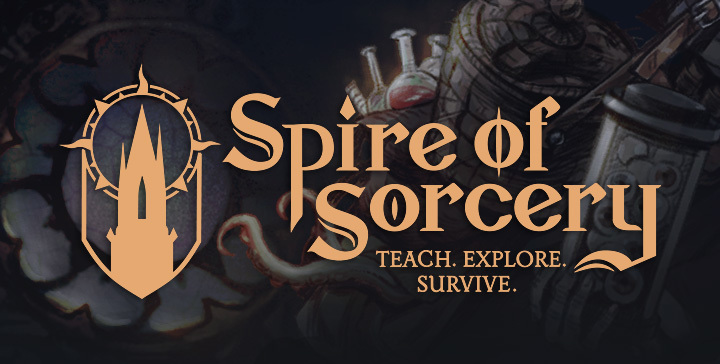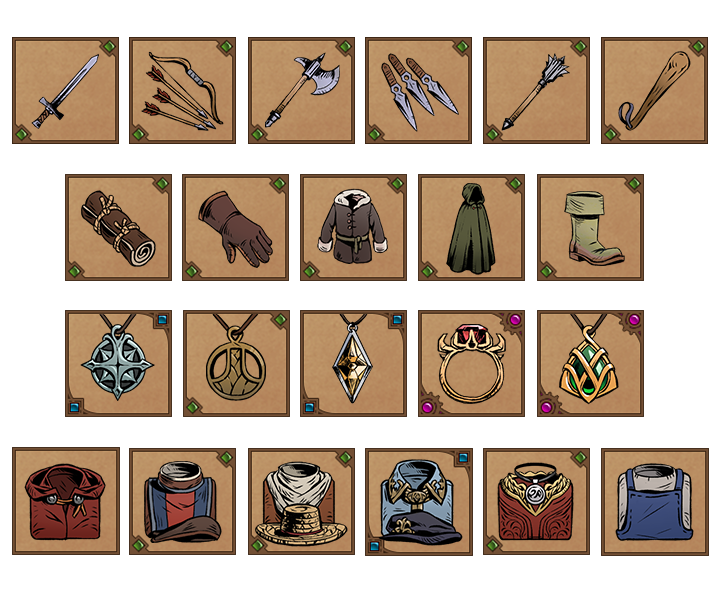#47 – FORESTS OF RUND
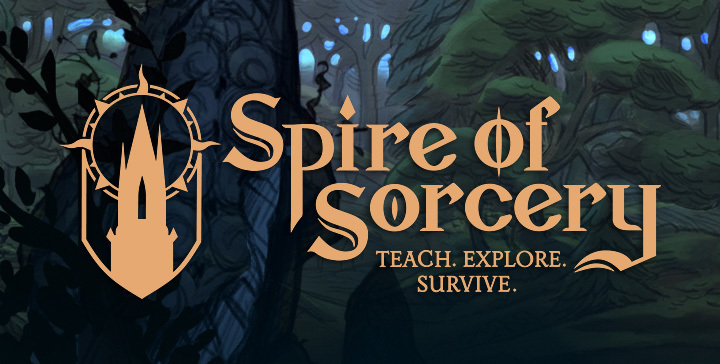
Earlier in the week, we celebrated the third anniversary since the release of our studio’s previous game, Gremlins, Inc., on Steam. In that time, we released nearly 100 updates with new content and new features for the game, as well as posted over 300 news stories.
With Spire of Sorcery, our plans are no less ambitious: we see the future launch of this game in Early Access (current expectations: some time before or around June 2019) as the beginning of the way rather than as the end of our development process.
As a somewhat seasoned developer (Charlie Oscar turns 5 years this year!), we have the knowledge and the skills to shape the game according to our game designer’s vision. But we also understand that with a complex design like that of Spire of Sorcery, there will be many more surprises and discoveries once the game is in the hands of players.
We’re pretty certain that a lot of truly great ideas will arrive only after the game enters its Early Access period, and we really look forward to that time!

REGULAR FORESTS AND ANCIENT FORESTS
The Cataclysm that marked the end of the Age of Mages, destroyed most of the civilization on the planet: cities turned to ruins, roads disappeared under the fallen ash. As the world lay abandoned, new forests took over any space that they could reclaim.
A few hundred years later, as the young Empire started digging itself out of the rubble and slowly expanding its reach to the west and to the east, it found these new forests useful for foraging and lumbering.
As to the forests that existed prior to the Cataclysm, they proved to be too difficult to traverse and too dangerous to explore. From the non-human dwellers of the past that still reside there to the century-old traps still set around ruins and monoliths, these ancient forests still keep – and protect – their secrets really well.
REGULAR FORESTS
“This very first sketch of the Regular Forest biome.”
Regular Forests cover most of the central part of Rund. Some of the larger animals that live in these biomes are Tasljuks, Forest Cats and Gigglers.
“As we developed the concept of the Regular Forest biome, we experimented with different shapes and colors.”
While Regular Forests may contain Monoliths, Idols, Ruins and even Sources, the chance of discovering such objects is quite low.
“The final version of the biome that you will see in the game.”
Regular Forests are a good source of berries and mushrooms, as well as of wood. Small and mid-sized game can be hunted for meat, hides and fur. Of the specific plants, one can find here belladonna, amanita and demon mushrooms, as well as hemlock, burnet and snakehead. All of these are useful alchemic ingredients.
“These are some of the resources that you can collect in the Regular Forest, as well as some of the creatures that you may meet there.”
Disciples of the Spire who travel through Regular Forests have a risk of encountering parties of hunters and lumberjacks, who may identify them as runaway mages and subsequently report them to the Inquisition in their home villages.
ANCIENT FORESTS
“Some of the first sketches of the Ancient Forest biome (here they also show a dwelling of Mushroom-eaters).”
Ancient Forests cover the eastern part of Rund, from north to south, ending only where Distorted Lands begin at the very edge of the world. Besides Tasljuks, Forest Cats and Gigglers, Ancient Forests are home to Blackpaws, Weepers, Bleeders, Weavers and Mushroom-eaters.
“As we developed the concept of the Ancient Forest biome further, we experimented with different shapes and colors.”
Ancient Forests hide Monoliths, Idols, Ruins and Sources.
“Here you can see how we fine-tuned the colors in the final version of the Ancient Forest biome; the last image is what you will see in the game.”
In addition to all the plants available in the Regular Forests, in Ancient Forests one can also find raven’s eye, hidden root, eye-flower, clathrus ruber and the deathflower tree.
“This illustration shows some of the resources that you can collect in the Ancient Forest biome as well as some of the creatures that live there.”
Traveling through the Ancient Forest takes significantly longer than traveling through the Regular Forest. There is a higher chance of accidents as well as the risk of encountering poisonous flora. Finally, disciples of the Spire who travel through the Ancient Forests may encounter not only non-human dwellers (who could be neutral or aggressive), but also parties of adventurers that are not bound by any laws of Rund and can take advantage of a weaker party.
–––
That’s it for today! As always, for updates on work in progress, please check the game’s official Discord server.

ːsummer_magicː Spire of Sorcery – Character Generator (Steam)
ːsummer_magicː Official Discord server
ːsummer_magicː YouTube recordings of the development live streams
ːsummer_magicː Twitter (game updates)
ːsummer_magicː Facebook (game updates)

ːmaliceː Official Discord server
ːmaliceː Twitter (game updates)
ːmaliceː Facebook (game updates)
ːmusicː Original Soundtrack on Spotify

ːnotebookː Charlie Oscar’s developer page on Steam
ːnotebookː Twitter (studio news)
ːnotebookː Facebook (studio news)
ːnotebookː "Behind the scenes" Instagram
ːnotebookː YouTube

























 Here’s several disciples from my current campaign. As you can see, their stats are quite different.
Here’s several disciples from my current campaign. As you can see, their stats are quite different. Current version of the game’s crafting screen (we haven’t optimized it yet, it just has a bare functionality at this time, so that we can use the feature already).
Current version of the game’s crafting screen (we haven’t optimized it yet, it just has a bare functionality at this time, so that we can use the feature already). Current versions of icons that we use for character states.
Current versions of icons that we use for character states.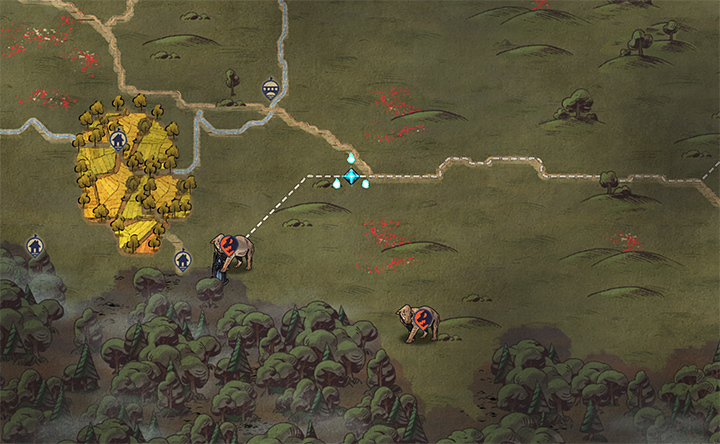
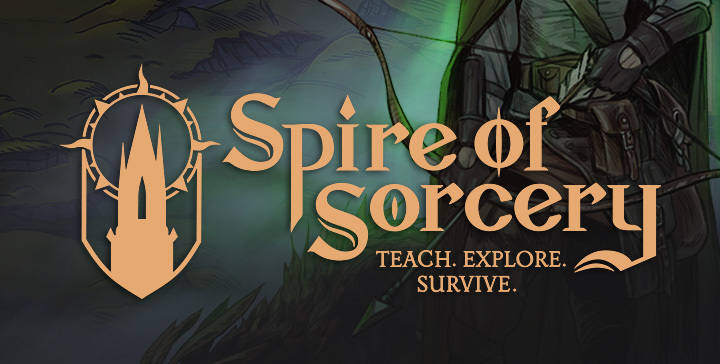
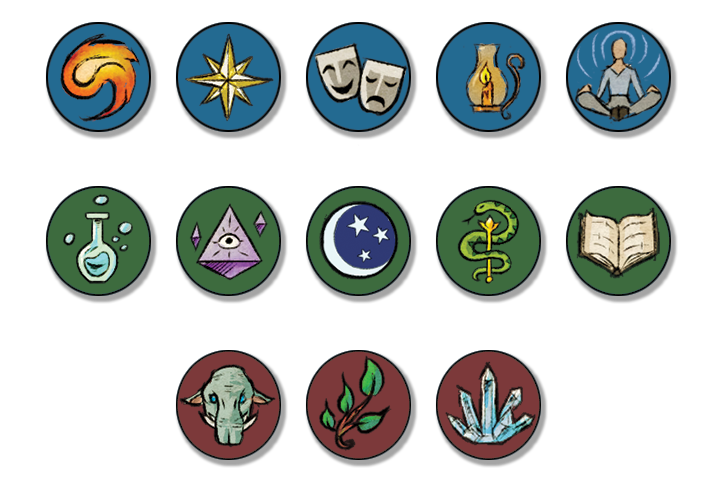 Here’s all the skills in the game, in one picture.
Here’s all the skills in the game, in one picture. Creating a skill icon that is easy to understand normally takes quite a few revisions.
Creating a skill icon that is easy to understand normally takes quite a few revisions. Hunting affects the success rate of procuring meat, skins and furs.
Hunting affects the success rate of procuring meat, skins and furs. Lumbering corresponds to the success of cutting down trees to produce wood that is later used for crafting and room upgrades in the Spire.
Lumbering corresponds to the success of cutting down trees to produce wood that is later used for crafting and room upgrades in the Spire. Mining corresponds to the success in extracting resources like emeralds, diamonds, ore and others that require digging.
Mining corresponds to the success in extracting resources like emeralds, diamonds, ore and others that require digging. Cooking is about preparing food rations.
Cooking is about preparing food rations. 
 Smithing, jewelry, tailoring and carpentry are all pretty obvious crafting skills: they are used to produce new items out of resources as well as to repair damaged items.
Smithing, jewelry, tailoring and carpentry are all pretty obvious crafting skills: they are used to produce new items out of resources as well as to repair damaged items.  Ancient tongue is the only secondary skill that serves as a strict requirement: a character absolutely must have this skill open in order to read books that are written in ancient tongue.
Ancient tongue is the only secondary skill that serves as a strict requirement: a character absolutely must have this skill open in order to read books that are written in ancient tongue. Speechcraft corresponds to the success of communication during diplomacy, trading and negotiations.
Speechcraft corresponds to the success of communication during diplomacy, trading and negotiations. Lock-picking corresponds to the success of opening locks on chests, abandoned buildings and, lastly, on houses in towns and villages.
Lock-picking corresponds to the success of opening locks on chests, abandoned buildings and, lastly, on houses in towns and villages. Streetwise helps find hidden locations in cities and towns (for example, different Guilds) as well as helps to remain unnoticed (avoiding the eyes of the guards and other malicious parties).
Streetwise helps find hidden locations in cities and towns (for example, different Guilds) as well as helps to remain unnoticed (avoiding the eyes of the guards and other malicious parties). Ranged combat helps in the unlikely case when your disciples need to actually engage in a fight using distanced weapons (bows, crossbows, slings).
Ranged combat helps in the unlikely case when your disciples need to actually engage in a fight using distanced weapons (bows, crossbows, slings).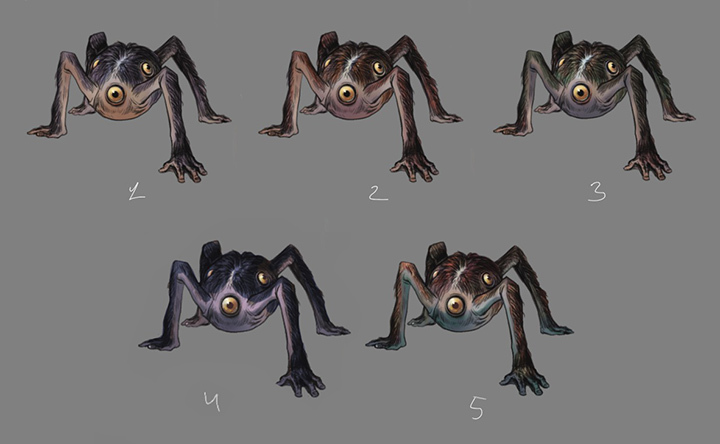 Once we finish the concept of a new creature, we create line art in black and white, and then start to colorize it. Here you can see different versions of colorization for Blackpaw (creatures that live in packs and like to steal and hoard items).
Once we finish the concept of a new creature, we create line art in black and white, and then start to colorize it. Here you can see different versions of colorization for Blackpaw (creatures that live in packs and like to steal and hoard items).